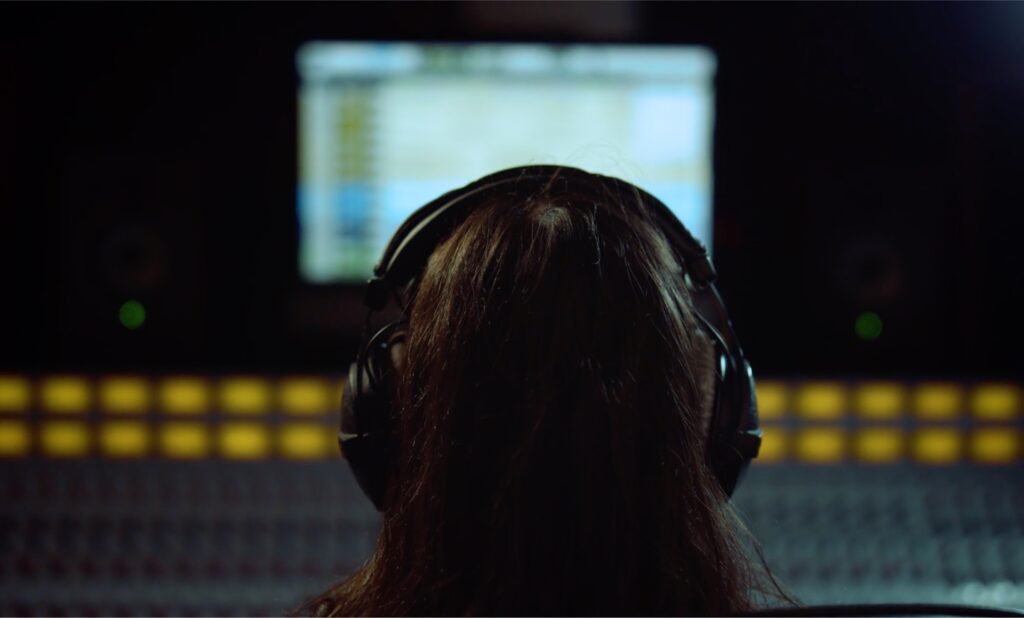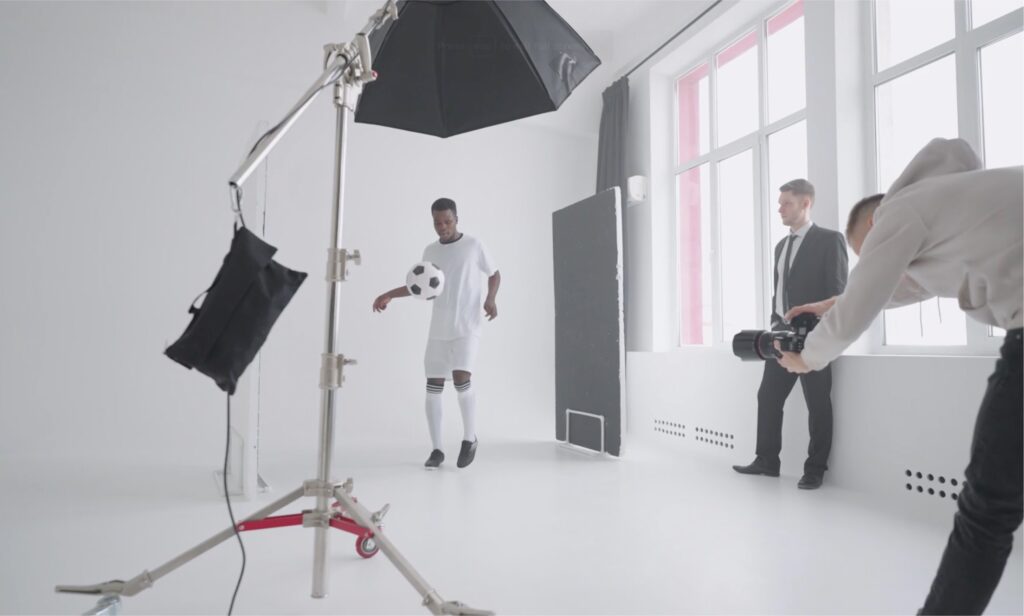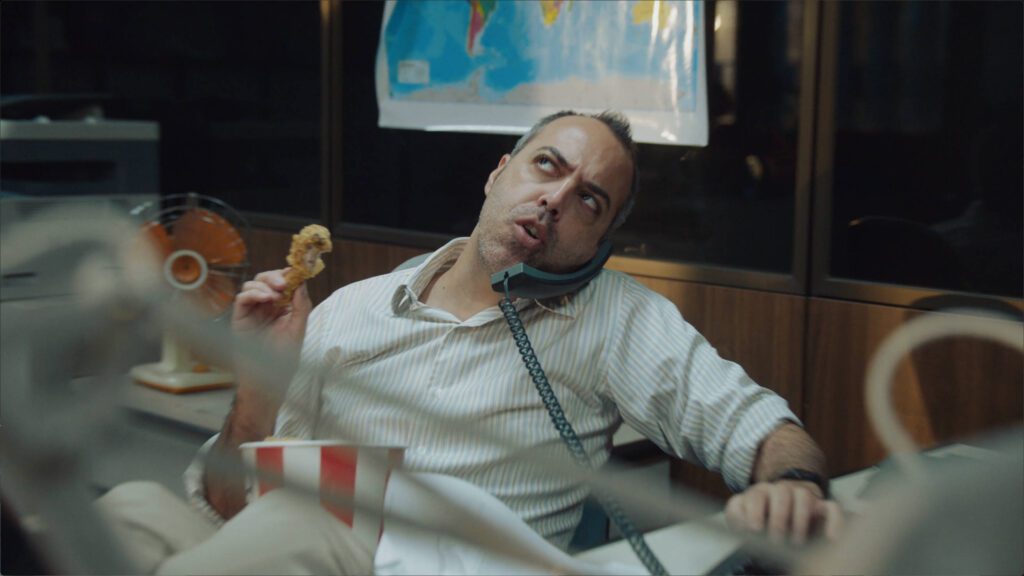Voiceovers in video production are a powerful tool that can greatly enhance the viewer experience. Whether used as narration, a shorthand device in commercials, or for comedic effects, voiceovers play a vital role in storytelling and engagement. In this section, we will delve into what makes a great voiceover, how to plan a video around voiceover, when to use voiceover instead of dialogue or music, and how to choose the right voice actor for your video’s voiceover.

The Process of Creating Voiceovers in Video Production
Creating voiceovers is a crucial step in video production that involves several key processes. It begins with writing a voiceover script that aligns with the visuals in the video. The script should effectively convey the message and enhance the storytelling aspect of the video. Once the script is finalised, the voiceover is recorded as a separate audio track during the post-production phase.
Recording the voiceover can take place in a soundproof booth or a quiet area of the office to ensure optimal sound quality. Hiring a professional voice actor is essential to deliver the desired tone and emotion in the voiceover. The actor’s voice should resonate with the target audience and effectively communicate the intended message.
Once the voiceover is recorded, it’s time to sync it with the video. This process ensures that the voiceover matches the visuals seamlessly. The sound levels are adjusted during the final mix to create a balanced audio experience. In addition to syncing the voiceover, post-production also involves adding any necessary titles, credits, or subtitles to enhance the video’s overall presentation.
Table: Voiceover Creation Process
| Process | Description |
|---|---|
| Scripting | Write a voiceover script that aligns with the video’s visuals and effectively conveys the message. |
| Recording | Hire a professional voice actor and record the voiceover in a soundproof booth or a quiet area. |
| Syncing | Sync the voiceover with the video to ensure seamless integration between the audio and the visuals. |
| Adjusting Sound Levels | During the final mix, adjust the sound levels to create a balanced audio experience. |
| Adding Titles, Credits, and Subtitles | Enhance the video presentation by adding any necessary titles, credits, or subtitles. |
The process of creating voiceovers in video production requires careful planning and attention to detail. By following these steps, video producers can ensure that the voiceover enhances the overall storytelling and engages the audience effectively.
The Role of Voiceovers in Video Storytelling
When it comes to video storytelling, voiceovers play a crucial role in enhancing the overall viewer experience. A well-executed voiceover emotionally communicates the message of the video, adding depth and resonance to the visuals. Through the power of voice, storytelling becomes more engaging, enabling the audience to connect with the content on a deeper level.
Voiceovers in storytelling serve multiple purposes. They provide new context or details that enhance the viewer’s understanding, adding an extra layer of meaning to the visuals. A carefully crafted voiceover can emphasise key value points, guiding the audience’s attention to specific aspects that are essential for the story’s impact. By aligning the voiceover text with the corresponding visuals, a cohesive and impactful storytelling experience is created.
Emotional communication is at the heart of effective voiceovers in video storytelling. The voice actor’s performance should be passionate, clear, concise, and true to the narrative. Through the tone, inflection, and pacing of their voice, they can evoke emotions, captivate the audience, and create a lasting impression. A well-executed voiceover has the power to transport viewers into the world of the video, enabling them to connect with the story and its characters on a profound level.
The Importance of Adding Context and Emphasising Visuals
Voiceovers in video storytelling also serve as a means to provide additional context and emphasise visuals. They can fill in gaps or provide explanations that enhance the viewer’s understanding of the content. By adding relevant information or insights through voiceover, the story becomes more comprehensive, leaving no room for ambiguity or confusion.
Furthermore, voiceovers can be instrumental in emphasising specific visual elements. They can draw attention to key details, highlight important actions or objects, and guide the viewer’s focus. By aligning the voiceover with the visuals, a synergy is created, reinforcing the message and ensuring that the audience captures the intended meaning.
| Benefits of Voiceovers in Video Storytelling | Examples |
|---|---|
| Enhances emotional connection with the audience | Using a heartfelt voiceover to narrate a touching story |
| Provides additional context and details | Using a voiceover to explain the historical background of a scene |
| Draws attention to important visual elements | Using a voiceover to emphasise the significance of a specific object |
| Guides the viewer through the story | Using a voiceover to introduce and conclude a video |
The Importance of Planning Voiceovers in Video Production
Planning voiceovers in video production is a crucial step that should not be overlooked. Taking the time to script, align, and pre-write voiceovers can significantly enhance the overall quality and impact of a video. With proper planning, voiceovers can seamlessly integrate with visuals, creating a compelling storytelling experience for the audience.
One of the main benefits of planning voiceovers is ensuring that they serve a purpose in the video. By scripting the voiceover text and aligning it with the visuals, you can ensure that the message being conveyed is clear, concise, and informative. This allows for a more focused and intentional video production process, eliminating any unnecessary or redundant voiceover content.
Additionally, planning voiceovers in advance allows for better synchronisation between the voiceover and the visuals. By pre-writing the voiceover, you can ensure that the timing and pacing of the voiceover align perfectly with the on-screen action. This attention to detail creates a seamless viewing experience and enhances the overall professionalism of the video.
Table: Benefits of Planning Voiceovers in Video Production
| Benefits | Description |
|---|---|
| Clear and concise message | Scripting voiceovers ensures that the message being conveyed is focused and informative. |
| Enhanced synchronisation | Pre-writing voiceovers allows for better alignment with visuals, creating a seamless viewing experience. |
| Professionalism | Planning voiceovers demonstrates attention to detail and enhances the overall quality of the video. |
Overall, planning voiceovers in video production is essential to create engaging and impactful content. By scripting, aligning, and pre-writing the voiceover, you can ensure that it serves a purpose, aligns with the visuals, and enhances the overall viewer experience. Take the time to plan your voiceovers, and you’ll see the difference it can make in the final product.
Conclusion
Voiceovers play a significant role in video production, enhancing engagement and storytelling. They serve as powerful tools to captivate viewers and convey important messages. The process of creating voiceovers involves careful planning, scripting, recording, and post-production editing.
When it comes to voice actors, their expertise brings depth and authenticity to the performances, allowing for a more impactful connection with the audience. While AI-powered voice synthesis technologies may offer efficiency, human actors can infuse emotion and personality into the voiceovers, making them more relatable and engaging.
Planning voiceovers in advance and aligning them with visuals is crucial for a seamless and impactful video production process. By scripting the voiceover text and corresponding visuals, the narrative becomes cohesive and coherent. This ensures that the voiceover serves a purpose, whether it’s adding context to the visuals or emphasising key points.
Ultimately, voiceovers contribute to the overall success of a video production. They enhance engagement, provide storytelling elements, and create a memorable viewing experience. So, when considering your next video project, don’t overlook the power of voiceovers in delivering your message effectively.
FAQ
What is a voiceover?
A voiceover, abbreviated as V.O., is a technique used in video production where a narrator’s voice is recorded and played over visuals to provide narration, information, or comedic effect.
How are voiceovers created in video production?
Creating voiceovers involves several steps. First, a script is written to match the visuals in the video. Then, a voice actor is hired, and the voiceover is recorded as a separate audio track during post-production. The voiceover is then synced with the video, and the sound levels are adjusted.
What makes a great voiceover in video production?
A great voiceover emotionally communicates the message of the video. It should be passionate, clear, concise, and true to the narrative. Voiceovers should add value to the video by providing new context or details that enhance the viewer’s understanding.
When should voiceovers be used instead of dialogue or music?
Voiceovers are used when the visuals alone cannot effectively convey the message or when additional context or information is needed to enhance the viewer’s understanding. Voiceovers can emphasize key value points or add more context to the visuals depending on the video’s goals.
How important is planning voiceovers in video production?
Planning voiceovers ahead of time by scripting them and aligning them with the visuals is crucial for a smooth video production process. Voiceovers should serve a purpose in the video and fit the overall story or product being presented.





